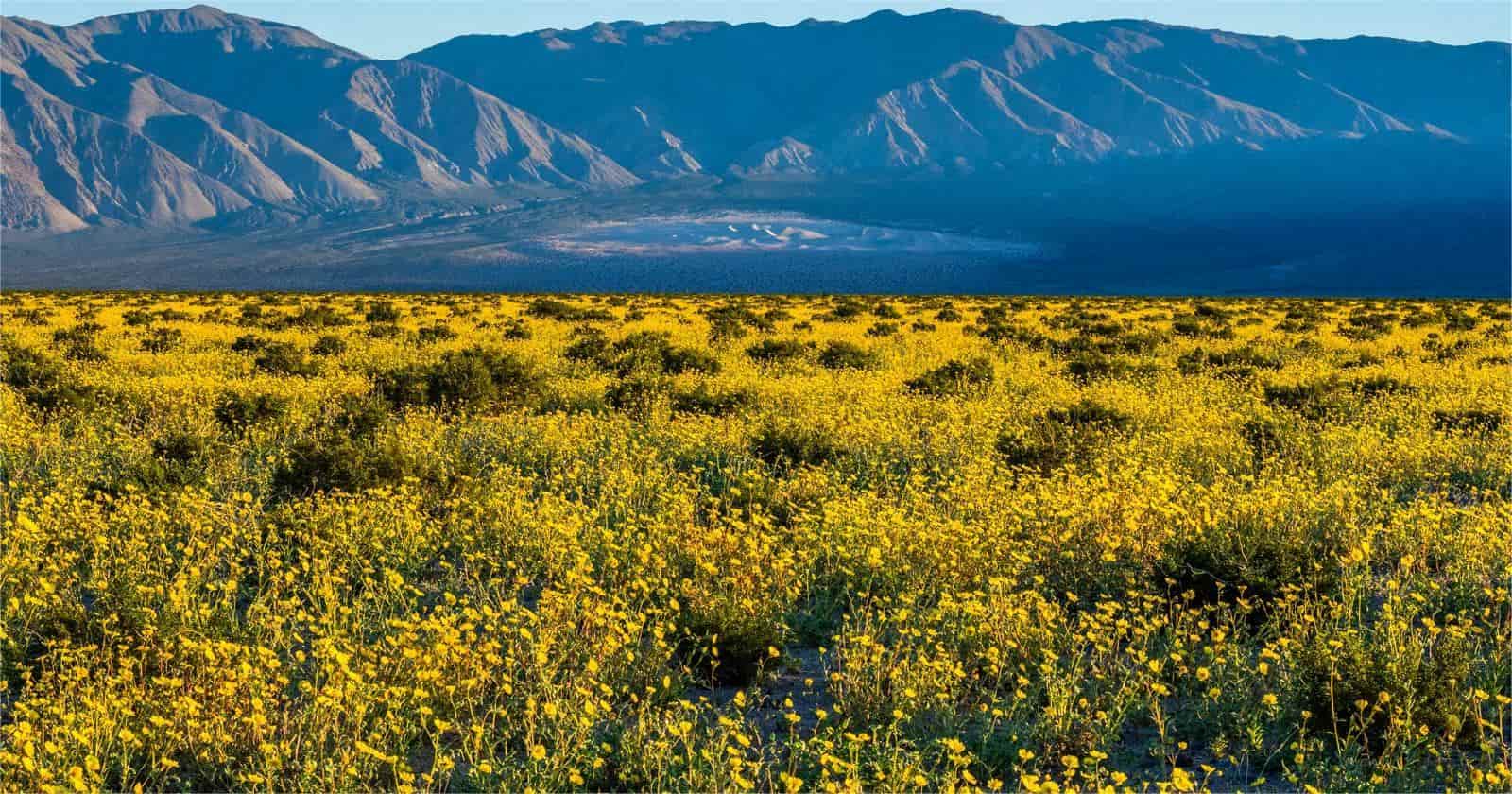Secrets Of California’s Death Valley Wildflower Meadows

Have you ever wondered how a place as dry as Death Valley can burst into a colorful display of wildflowers? Death Valley wildflower meadows are a rare and stunning sight, transforming the harsh desert landscape into a vibrant carpet of blooms. This natural phenomenon, known as a "super bloom," occurs when the perfect combination of rain, temperature, and timing align. These wildflower meadows can be seen from late February to early April, depending on the year's weather conditions. Visitors flock to Death Valley during these months to witness this breathtaking event. Ready to learn more about this incredible transformation? Let's dive into the secrets behind Death Valley's wildflower meadows.
The Magic of Death Valley Wildflowers
Death Valley, known for its extreme heat and arid landscape, transforms into a vibrant wildflower wonderland during certain times of the year. This natural phenomenon, often called a "super bloom," occurs when conditions are just right. Let's explore some of the best spots to witness this breathtaking spectacle.
Best Time to Visit
Timing is everything when it comes to catching the wildflowers in full bloom. Typically, the best time to visit is between late February and early April. Rainfall during the winter months plays a crucial role in determining the intensity of the bloom.
Must-Visit Wildflower Spots
Badwater Basin
- Located 282 feet below sea level, Badwater Basin is one of the lowest points in North America. During a super bloom, this salt flat transforms into a colorful carpet of flowers. Look out for the bright yellow Desert Gold and the delicate white Gravel Ghost.
Golden Canyon
- Golden Canyon offers a stunning contrast of golden rock formations and vibrant wildflowers. The easy hike through the canyon allows visitors to see a variety of blooms, including the purple Notch-leaf Phacelia and the yellow Desert Marigold.
Artist's Drive
- This scenic loop drive is famous for its colorful rock formations, but during wildflower season, the roadside bursts with color. Keep an eye out for the pink Desert Five-spot and the blue Desert Larkspur.
Furnace Creek
- Furnace Creek is a popular starting point for many visitors. The surrounding areas, including the Furnace Creek Wash, are often filled with a variety of wildflowers. Look for the yellow Desert Gold and the purple Sand Verbena.
Zabriskie Point
- Known for its stunning sunrise views, Zabriskie Point also offers a great vantage point for wildflower spotting. The hillsides around the viewpoint are often dotted with colorful blooms, including the white Gravel Ghost and the yellow Desert Dandelion.
Titus Canyon
- This narrow, winding canyon is not only a geological wonder but also a hotspot for wildflowers. The drive through Titus Canyon reveals a variety of blooms, such as the pink Desert Five-spot and the yellow Desert Sunflower.
Mesquite Flat Sand Dunes
- The sand dunes near Stovepipe Wells are a unique spot to see wildflowers. The contrast between the golden sand and the colorful flowers is truly mesmerizing. Look for the purple Sand Verbena and the yellow Desert Primrose.
Dante's View
- Perched high above the valley floor, Dante's View offers panoramic views of Death Valley. During wildflower season, the slopes leading up to the viewpoint are often covered in blooms. Keep an eye out for the white Desert Chicory and the yellow Desert Gold.
Mosaic Canyon
- Known for its smooth, polished marble walls, Mosaic Canyon is also a great place to see wildflowers. The hike through the canyon reveals a variety of blooms, including the purple Notch-leaf Phacelia and the yellow Desert Marigold.
Wildrose Canyon
- Located in the Panamint Mountains, Wildrose Canyon offers a cooler escape from the valley floor. The higher elevation means a different variety of wildflowers, such as the pink Desert Five-spot and the blue Desert Larkspur.
Tips for Wildflower Viewing
To make the most of your wildflower adventure, consider these tips:
- Check Bloom Reports: Local park websites and social media often provide updates on bloom conditions.
- Stay on Trails: Protect the delicate flowers by sticking to designated paths.
- Bring Water: Death Valley can still be hot, even during wildflower season. Stay hydrated.
- Wear Sun Protection: Hats, sunglasses, and sunscreen are essential.
Witnessing the wildflower bloom in Death Valley is a magical experience that showcases the resilience and beauty of nature. Whether you're a seasoned hiker or a casual visitor, these spots offer a glimpse into one of nature's most stunning displays.
Nature's Hidden Gem
California's Death Valley wildflower meadows offer a stunning display of nature's beauty. These vibrant blooms transform the harsh desert landscape into a colorful paradise. Visiting during the springtime, especially after a rainy winter, gives you the best chance to see this natural wonder. Remember to bring water, wear sun protection, and respect the delicate environment.
Exploring these meadows provides a unique experience, different from the usual desert scenery. The contrast between the arid surroundings and the lush flowers is truly breathtaking. Whether you're a nature lover, photographer, or just looking for a peaceful escape, Death Valley's wildflower meadows won't disappoint.
Plan your trip, pack your essentials, and get ready to witness one of nature's most spectacular shows. This hidden gem is waiting to be discovered, offering memories that will last a lifetime.

